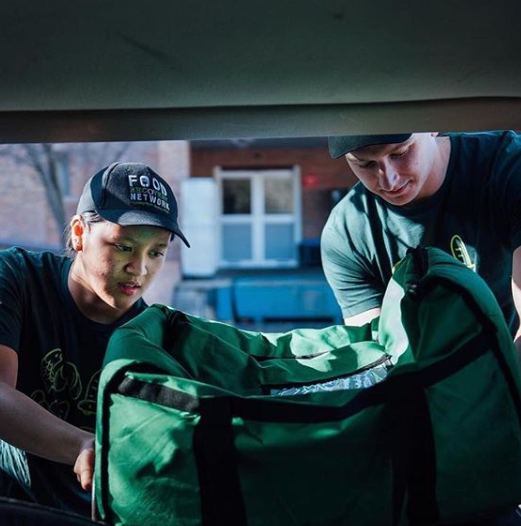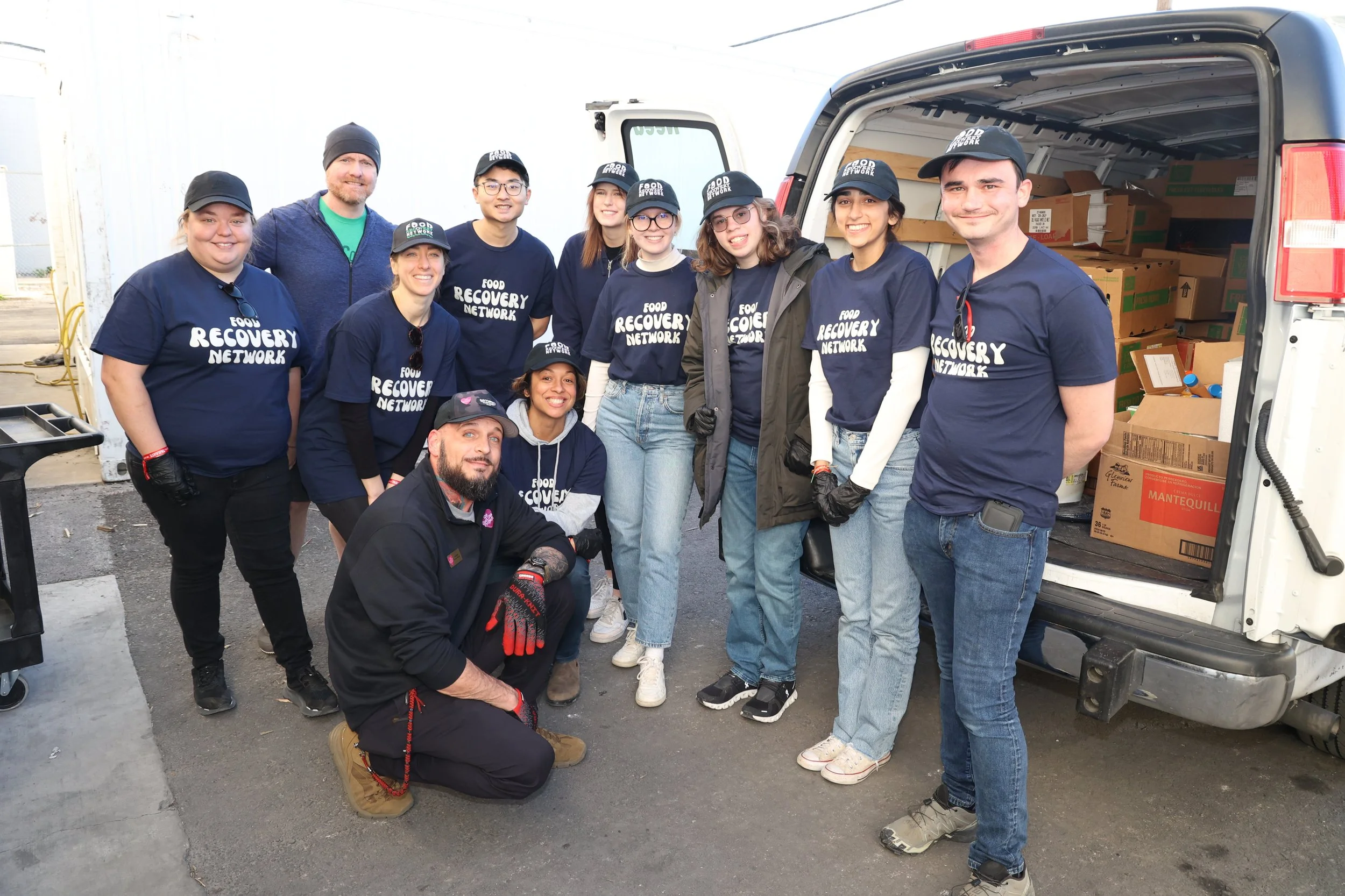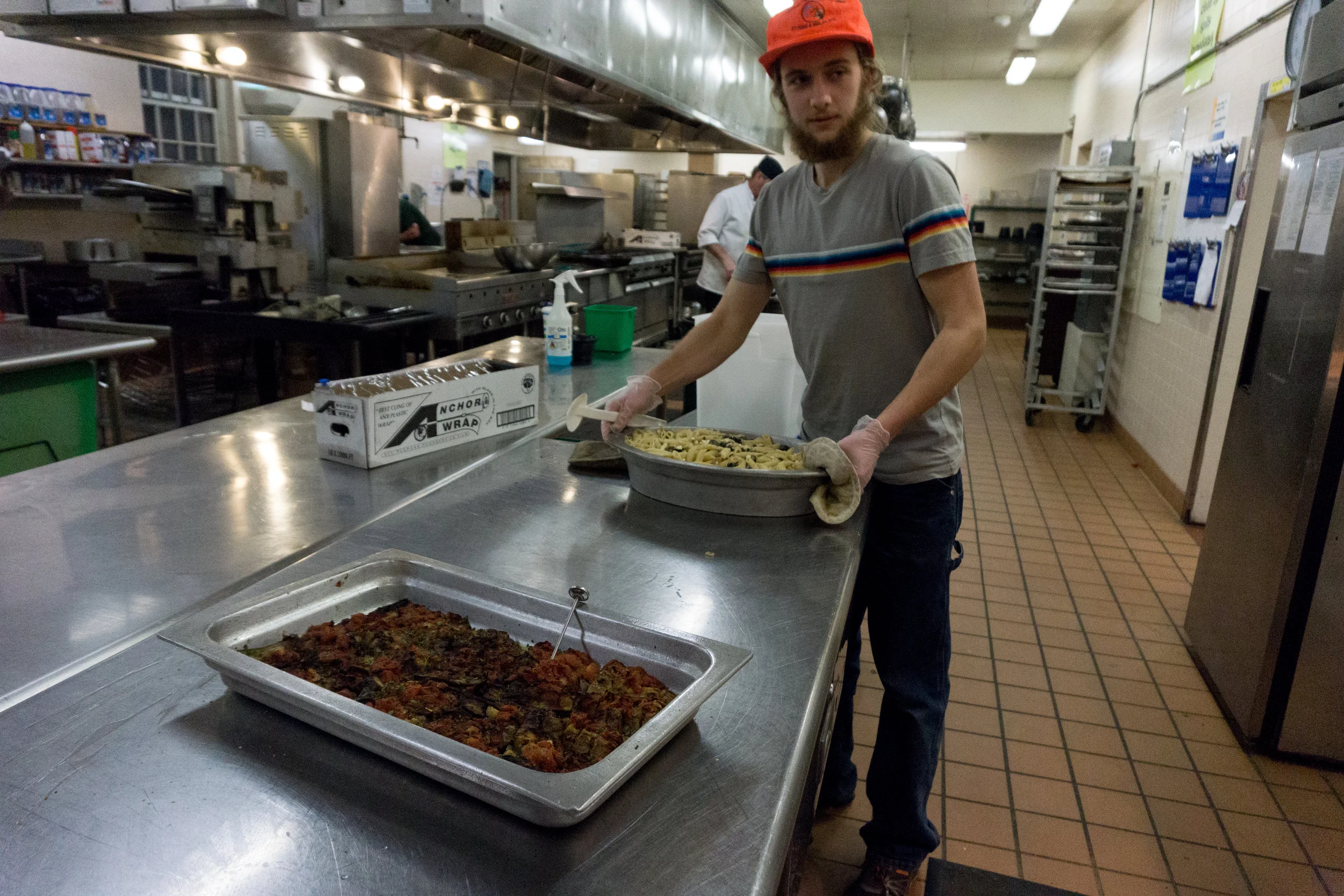Exploring Farm to Institution Dining at the University of Michigan
Arynne Wegryn-Jones is a member of Food Recovery Network at the University of Michigan, where more than 23,000 pounds of food have been recovered since 2012. Are you interested in telling your unique #FRNSpeaks story? Want to get in touch with Arynne and the University of Michigan chapter? Reach out to programs@foodrecoverynetwork.org and we'd be happy to connect you.
If you’ve ever been to a farmers market, the first thing you might notice is a sense of connection between the products and the people there. You might see how eager each farmer is to talk to you about what they’re selling, because most of the time they grew it or made it themselves. If you’ve ever eaten a vegetable that was harvested that day, or bitten into an apple that came from the orchard down the street, you might notice how much better it tastes. This taste is not just physical. An entirely new eating experience comes from knowing the food is not only good for you, but good for the person you bought it from and good for the environment in which it grew. This is something I came to understand over the course of my first semester as a student at the University of Michigan and a member of the Food Recovery Network (FRN).
I joined FRN early in the fall of my first year at the U of M. I was inspired by its mission to fight an issue I had never thought much about myself: the outrageous and unnecessary level of food waste in this country and the amount of people who are still going hungry despite it. The knowledge I have gained from FRN regarding this absurd gap, and the experience I have gained in fighting it by volunteering, has inspired me to take on a greater role in the food system we have on campus.
This past fall I had the honor of being enrolled in a course called “The Future of Food at the University of Michigan,” taught by Professor Lisa Young. The course looked at the past, present, and future of the food system here at the University of Michigan and what it is doing to become more sustainable. Students in the course examined various aspects of the U of M food system in order to collaboratively imagine and discuss ways to address the challenges associated with a sustainable food system.
As an honors student (and a newly-inspired food system fanatic), I chose to complete an additional research project that delved deeper into what we were learning in class. I decided to examine the food system at an institution known for being one of the leaders in the nation for sustainable food sourcing, the University of Massachusetts Amherst, and compare their model to that of MDining at U of M. With the help of Professor Young, I arranged an interview with the recently retired Chef de Cuisine of MDining, Nelson “Buzz” Cummings, to talk about the history of the locally-sourced food system at U of M.
Through my research, I learned that “sustainable” and “local”, though intimately related, are two different ways to think about food. Chef Buzz told a story about taking students on a trip to Lesser Farms in Dexter, MI to pick apples and make the connection to where the food in the dining halls was grown. He described how he valued fresh, local produce and the relationships they build with the farmers in sourcing it, compared to conventionally grown and mass-distributed products. I learned about the challenges U of M has faced with switching to doing business with small-scale local producers and how they have had to make compromises to meet both the needs of the farmers and the needs of U of M. By controlling portion sizes, implementing trayless dining, composting whatever they can’t recover, U of M has made strides to reduce their level of food waste as an institution.
Although MDining is unique in the way it sources local food, it is not alone in trying to make the institution more sustainable and less wasteful. UMass Amherst has adopted a goal of sourcing 50% local food by the year 2060, which is comparable to U of M’s more modest goal of 20% sustainably sourced food by 2025. UMass has made enormous progress toward its goal and described the plan in its publication Making Local, Healthy, Sustainable Delicious; The How-To Guide for Foodservice Operators. Schools across the nation are recognizing the health and educational benefits of local food sourcing.
It all comes back to what local sourcing means for our food system. When you go to the farmers market and buy a bushel of greens or a carton of eggs, you’re supporting your health by eating fresh organic products. You’re also supporting the health of your local economy by keeping funds in the community and creating jobs. Most importantly, you’re supporting the health of the environment by discouraging large-scale production that increases carbon emissions. Large-scale institutions like the Universities of Massachusetts and Michigan are uniquely able to lead the transformation to a sustainable and less wasteful food system through opportunities to educate students. Through this course and my involvement with FRN, I learned that waste is a problem not just for food, but for resources of every kind. I am optimistic, however, that the future of food is a good one if we at FRN continue to work together to reduce, and educate on food waste, and if our community continues to demand local, healthy, sustainable foods. My advice for you is this: give often, waste little, eat local, and GO BLUE!














